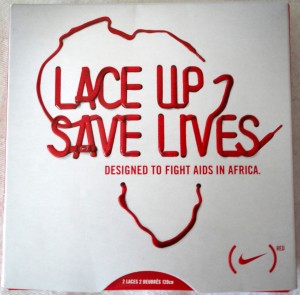‘Cause marketing’ has become so commonplace that simply aligning with a cause and making monetary donations is no longer enough to impress customers. Customers are experiencing a sense of cause-fatigue that in turn has resulted in less participation in cause marketing efforts. Campaigns must be genuine and innovative to make an impact. Companies also must take think outside the box to consider how they will overcome skepticism in their cause marketing initiatives.
What is cause marketing?
Cause marketing is when a company joins forces with a charity/nonprofit organization for a mutually beneficial outcome; namely, the company benefits from being viewed as philanthropic, and the charity benefits from increased attention to and support for its cause.
About three quarters of American adults are influenced by cause marketing – at least to some extent. This equates to roughly 181 million Americans. A recent Mintel report shows that people aged 25-34 are the most likely to take note of causes in their purchase decision. This group overlaps with Millennial parents who are the most impacted group by cause marketing – some 69% of Millennial moms and 81% of Millennial dads say that cause- related campaigns influence their decisions either occasionally or frequently. Cause marketing can be an effective tool for raising funds for great causes and generating a good brand reputation for philanthropic partners.
The issues with cause marketing
Research shows that many customers believe that the main reason companies engage in cause marketing is to make themselves look better. Customers are poised to punish or praise companies for their cause marketing efforts, and combating the skepticism can get complicated.
Another obstacle is that there are also so many companies supporting causes that many customers do not pay attention to cause marketing anymore. Bandwidth for considering cause marketing in purchasing decisions is limited – when a campaign fails to make an impression and resonate with customers on a personal level, the message gets lost in the noise and may even drive customers away.
Skepticism is also a problem for the charities/causes themselves. The rise of websites and tools that measure the effectiveness of nonprofits and track spending on administrative costs suggests that skepticism is not limited to for-profit companies.
How to stand out
Find a related cause
According to research, 60% of respondents feel that it is more genuine when a company supports a cause that is somehow related to its products, such as a sunscreen brand partnering with a skin cancer organization. While is it important to select causes with broad appeal, it is crucial that a company does not simply pick the cause du jour if the ultimate goal is to be viewed as genuine.
Commit
If there is a monetary cap that must be reached in order for your organization to donate to the cause you are supporting think again. When it comes to preferred cause marketing strategies, customers generally like companies to commit to making a large donation regardless of the number of products sold. Customers want cause marketing campaigns to be genuine and for the good of a cause that the company actually believes in. Many will likely respond more to such efforts, which will ultimately boost sales.
Get your cause approved
As an effort to quell skepticism, some organizations are working to certify cause marketing programs. Customers may be less skeptical of cause-marketed products if they carry a “stamp of approval” from a respected third-party organization such as Fair Trade USA and Consumer Lab.
While supporting a cause normally will not harm a company, it seems necessary to “go big or go home” to truly impress custumers. Companies must consider how they will combat skepticism, cause-fatigue, and apathy when launching cause-marketing initiatives. Campaigns must be genuine and innovative to leave an impression on customers.




